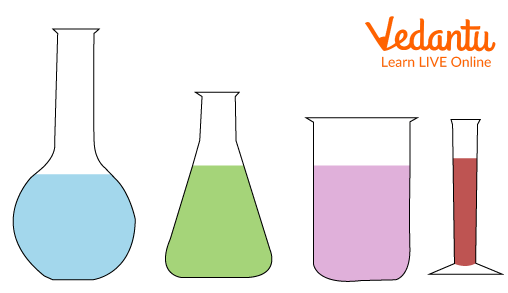




What is Volume?
Volume is the amount of space a substance takes up. Although there are many other units that can be used to express volume, the most common ones are litres, cubic metres, gallons, millilitres, teaspoons, and ounces. In this article, we will discuss the use of volume in real life and why volume is important in Science.
Why is Volume Important in Science?
In science, measurements of length, width, and height are used to compute an object's volume, which is its interior space. Science revolves around physical quantities for general calculations and volume is one among them. In physics and chemistry, the concept of volume is used to describe three-dimensional space. It is derived from length units (one dimension). The litre L is a more widely used unit in the metric system than the cubic metre (m3), which is the basic SI (international system) unit of volume.
Measurement of volume in solid, liquid, and gases follow the general criteria. Gases have a volume equal to the internal volume of the container because they fill their containers to the brim. Containers with a marked volume or one whose internal shape is known are frequently used to measure liquids. Measuring cups, graduated cylinders, flasks, and beakers are a few examples of the tools used to measure liquid volume. The volume of regular solid shapes can be calculated using formulas. Measuring the amount of liquid that a solid displaces is another way to calculate its volume.

Volume of Different Containers
How Can You Use Volume in Real Life?
In our daily lifestyle, generally we talk about the quantity of water to be added to tea, the amount of milk to be bought daily, or about the recipe of your favourite dish. Everything we measure comes under this physical quantity called volume. Let us see the use of volume in daily life:
House Cleaning: All the major housekeeping cleaning tasks involve the use of volume. Whether we talk about the amount of water to be used or about the fixed amount of liquid detergent to be added. Sometimes in order to dilute a respective detergent, a specific volume of water will do the needful. Thus, we always look forward to adding a fixed amount of liquid in our cleaning chores too.
Cooking: The number of measuring spoons in one's kitchen will tell us enough how frequently we use the term volume. Whether it would be ½ cup of oil to prepare a basic recipe to a litre of water needed to prepare a soup.
Fuel Intake: These days our life is impossible without any sort of vehicle. Whether it would be a bicycle or a car we will need to fuel it up for our daily routine to function properly. So the amount is determined by a volume calculation, whether you fill up with gasoline or another fuel in gallons, litres, or both.
Solved Questions
1. What is the S.I. Unit of volume in science?
Ans: The S.I. unit of volume is the cubic metre (m3). However, the litre is the unit of volume that is most frequently used. Other units used to measure large and small volumes include millilitres (ml), pints, gallons, and others.
2. What is volume?
Ans: The capacity of an object is measured by its volume. For instance, a cup's volume is said to be 100 ml if it can hold 100 ml of water in its brim.
3. How is volume useful in real life?
Ans: The term volume is useful in daily life as whether we talk about making a recipe or a drink we measure it with any of the units of volume and same goes with vehicle fuel intake too.
Summary
The term "volume" describes how much room an object occupies. In other words, just as height and width are ways to describe size, volume is a measure of an object's size. The volume of an object is how much water it can hold if it is hollow, or empty. The SI unit of volume is cubic metre though litre is the commonly used one.
FAQs on Uses of Volume in Daily Life
1. What is the distinction between volume and capacity?
The total amount of space an object occupies in three dimensions is indicated by its volume. The term "capacity" describes something's ability to hold, absorb, or receive by an object (such as a solid substance, gas, or liquid). Volume exists in both solid and hollow objects. The capacity only applies to hollow objects.
2. Which volume measurement technique is more precise?
In science experiments, an accurate graduated cylinder should be superior to a beaker.
3. What is a container's volume?
The volume of a container is typically thought of as its capacity, not as the amount of space it takes up. In other words, the volume is the amount of fluid (liquid or gas) that the container could hold.









